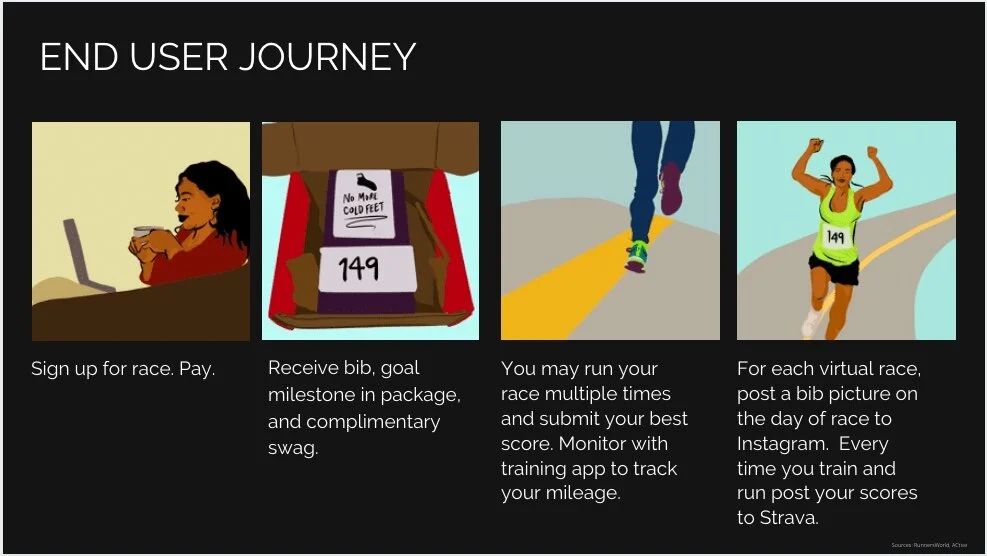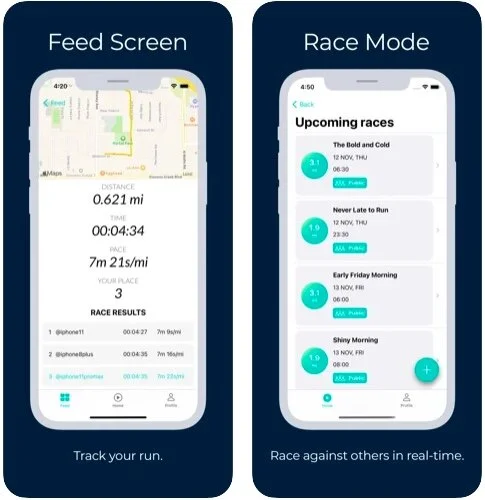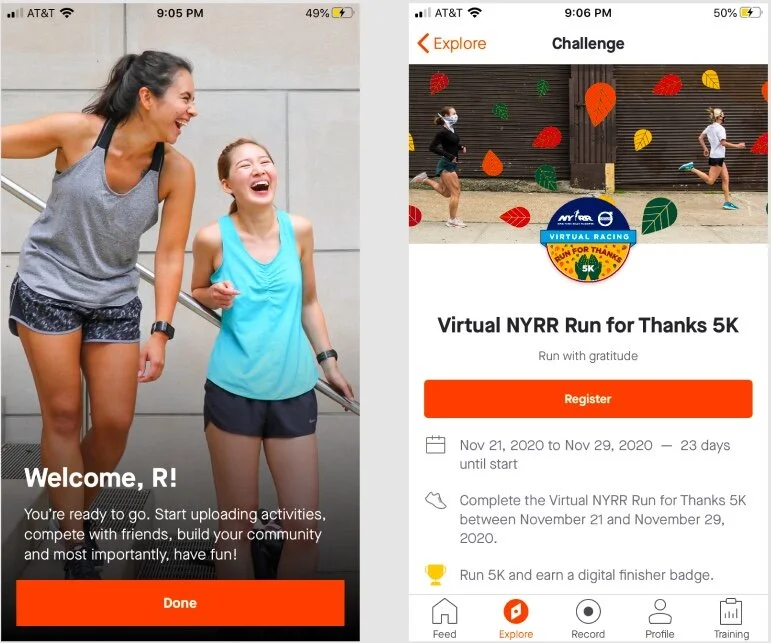Race In The Box
Making race organization a snap
Enabling race organizers and sponsors to innovate in a post-pandemic world.
ROLE
Art Director
Illustrator
UX Researcher
DURATION
2 months
Challenge
Organizing a race has never been simple. Race organizers need sponsors who can underwrite races, vendors to serve a wide variety of needs, find and serve the runners and an appropriate cause and beneficiaries. Runners meanwhile found it ever more harder to get into prestigious races and local organizations attempting to raise funds through races found the complexity daunting. And the pandemic has only made it even more complex.
Background
The project was originally conceived as a way to help runners participate in virtual races during (and after) the pandemic. We began examining how delivery of all that runners require to participate in virtual races would happen and what challenges and changes to such delivery would take place. With that in mind we began by mapping interactions a runner or athlete would encounter.
Initial Research
After interviewing 7 athletes, 2 in-depth interviews, it was clear that fit and trial for a product, particularly apparel or gear was a barrier for successful online deliveries.
Athlete's shopping preferences are personal and tailored to their interests and sport of choice.
For challenge based sports, deliveries encompass a pre-challenge delivery and a post challenge delivery. For instance, training material and race instructions is followed by a medal or milestone prize as a post-challenge delivery.
Pivot
The preliminary research unearthed a larger challenge for stakeholders around the runner. These included three distinct groups:
Race organizers Local, regional and national race organizations that run annual or more frequent races who serve these runners face a variety of challenges
Sponsors businesses that underwrite or sponsor races for marketing, community outreach or corporate social responsibility reasons
Beneficiaries social or non-profit organizations that seeks to raise funds through races
We decided to focus on addressing their problems with race organizers and sponsors as our primary customers while runners remained their (and our) end-users.
“Race in a Box is a platform for organizers to host a race, partner with vendors to deliver race perks, and coordinate charitable efforts.”
Interview Insights
Virtual races have made it possible for people to run competitively all the time. It increases the likelihood, of whatever existing shortcomings in the delivery systems being exacerbated because of increased participation.
There are new deliveries that may or may not have problems but now “I'm running races all the time so the older deliveries still hold me up.” Possibly at a greater frequency.
“Participants in virtual races run whenever they can, wherever they can, and say they still have some of the sense of being part of a crowd, even if they’re running alone.”
Analyzing Research
In order to examine and develop a design for a system in transition, specifically with a forward-looking perspective, (a perspective that takes time and human (and agential) activity into account as a central aspect of the designing) I have created both an empathy and a customer journey map. Researching and designing for a system in transition is an attempt to “understand a holistic view of the system, viewing the aspects of the system as in a perpetual state of evolution and development.”
Rewards Tiered
Prototype
Target Audience Race Organizers, and Sponsors
Use case Organizing a race has a lot of moving parts. Race in a Box plans to solve that problem for you by hosting and building a platform for organizers.
Ethos A platform for race organizers to host a race, partner with vendors, beneficiaries and other sponsors. Providing a full spectrum of organizing services, Race in the Box builds a challenge with a click of a button.
Challenge-based deliveries push and excite a customer. They earn it after blood, sweat, and tears. The flow state is one that athletes achieve every time they hit that runners high. Race in the Box attempts to make the delivery experience an extension of this.
After a quick check-in with potential users, the hand sketches were developed into a more detailed prototype concept. Tiered reward options were and developed into medium-fidelity prototypes on Figma.
“My delivery process is focused on rewarding how athletes embrace the uncertainty of the outcome, the value of the journey, and doing social good.”
Lessons learned
The lessons from my prototype and precedent research made it clear that targeting race organizers and sponsors could shape the entire landscape. By tiering rewards, we also acknowledge that athletes enter virtual races with different motivations. The growth in virtual race culture stems from the need to sustain and build community and contribute meaningfully virtually. Others, love to win.
My initial delivery research focused on improving deliveries of universal issues athletes (end-user) faced such as fit or timing of product. The prototype helped me realize that there is a wider ecosystem that needs to be addressed. With a systemic change, sponsors and beneficiaries can work to improve these delivery bottlenecks in partnership with each virtual race.











